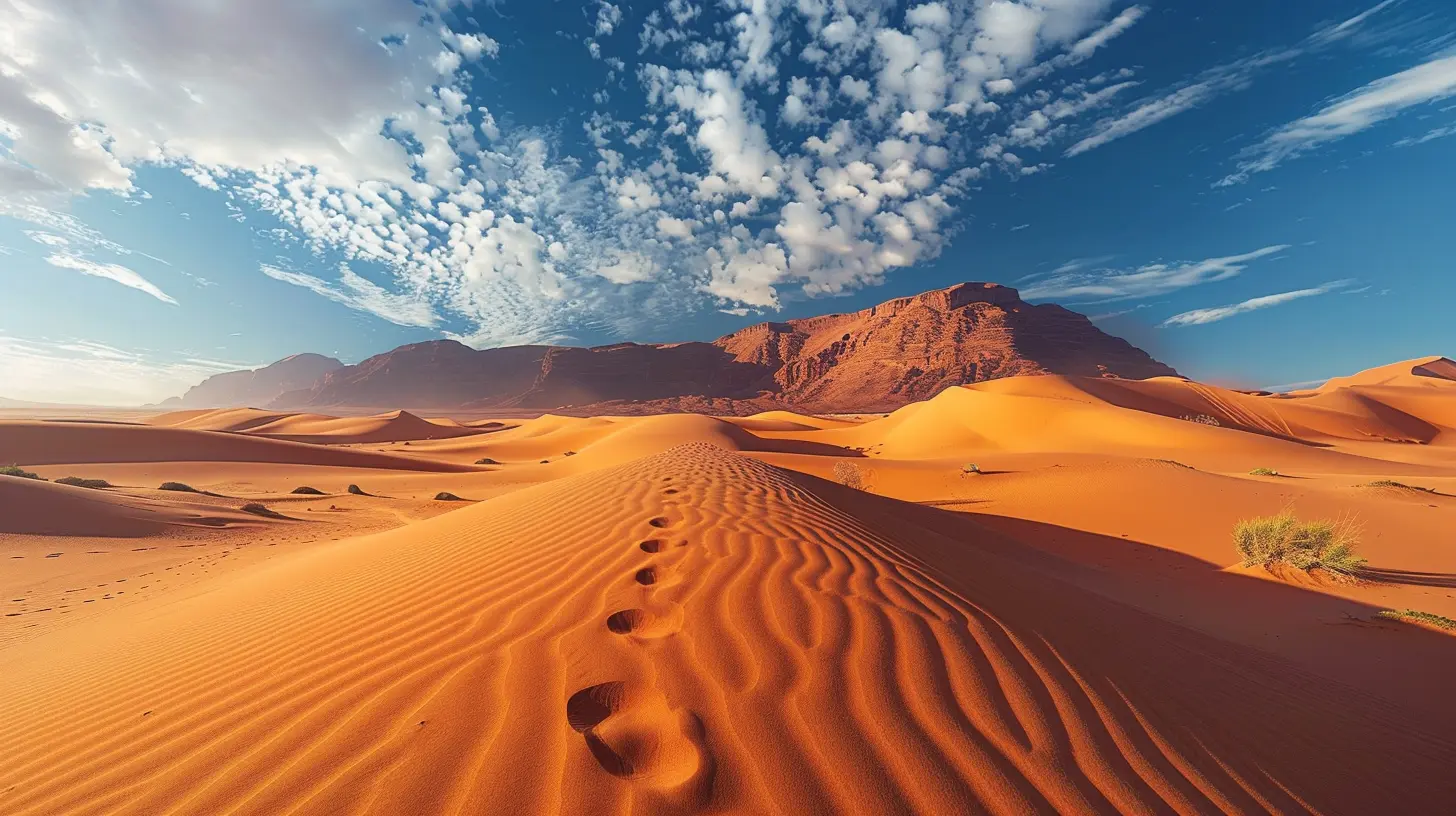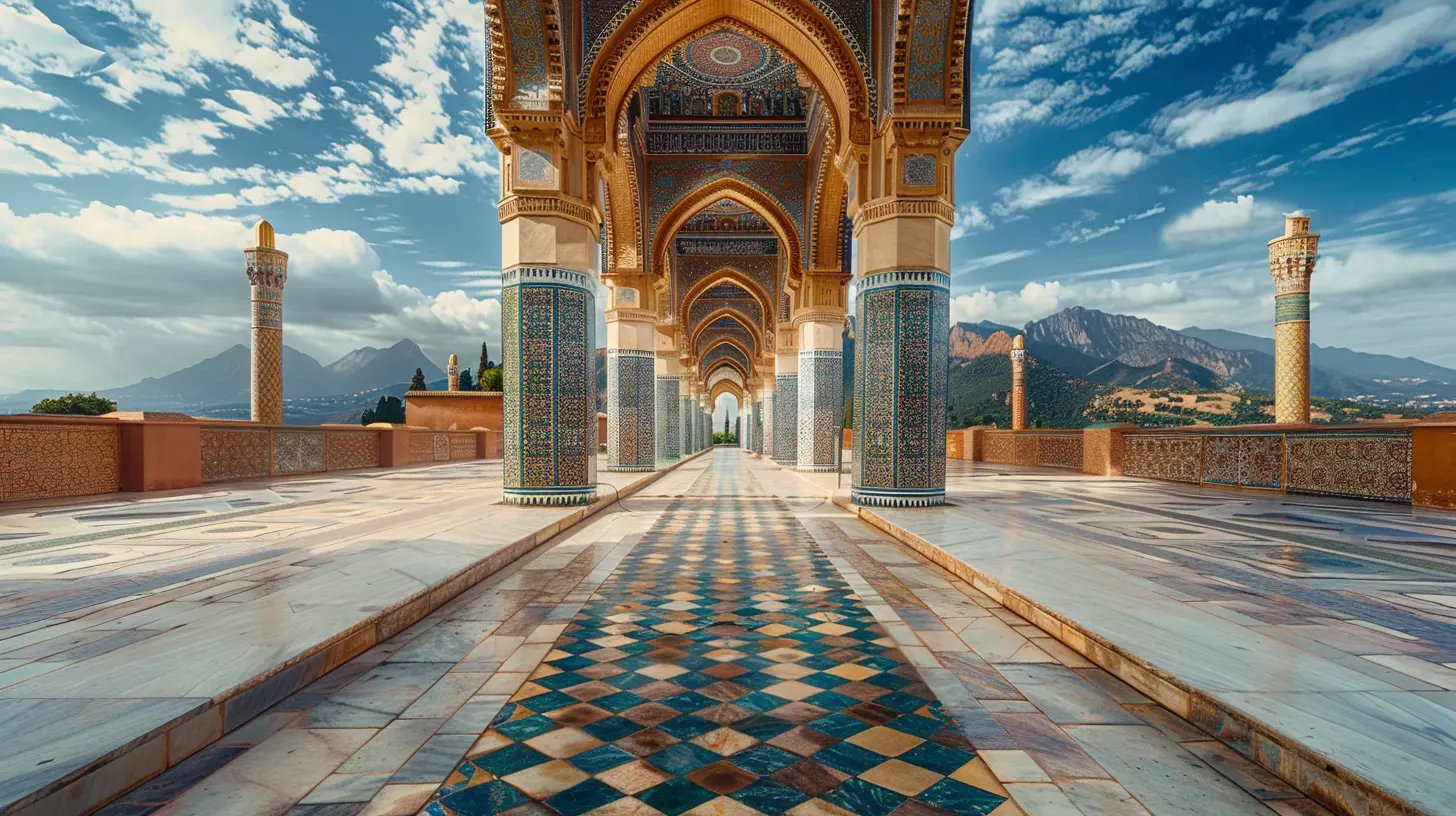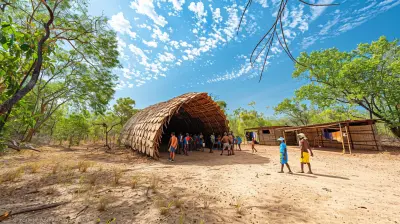Capturing Vast Landscapes: Wide-Angle Photography for Your Next Adventure
3 August 2025
Have you ever stood before a breathtaking landscape and thought, "How do I capture this grand view in all its glory?" If so, you're not alone. Wide-angle photography is the secret weapon for travelers who want to bottle up the beauty of vast landscapes in a single frame.
Whether you're hiking through misty mountains, standing on the edge of a dramatic coastline, or staring out at rolling deserts, a wide-angle lens can bring your vision to life. But using one isn't just about slapping it onto your camera and clicking away—it requires a little technique, a bit of patience, and a dash of creativity.
So, grab your camera and let’s dive into the world of wide-angle photography to help you capture stunning scenes from your next adventure!

What is Wide-Angle Photography?
Before we get into the nitty-gritty, let’s clarify what a wide-angle lens actually is. A wide-angle lens typically has a focal length of 35mm or less (on a full-frame camera). This means it captures more of the scene by expanding the field of view—perfect for landscapes, architecture, and even astrophotography.If you've ever tried capturing a massive mountain range with a regular lens, you probably know the struggle of fitting everything into the frame. Wide-angle lenses solve this problem by letting you squeeze in more details without stepping back a mile.
Different Types of Wide-Angle Lenses
Not all wide-angle lenses are created equal. Depending on your style and budget, here are the main options to consider:- Standard Wide-Angle (24mm-35mm): Great for landscape photography, general travel shots, and even environmental portraits.
- Ultra-Wide-Angle (10mm-24mm): Ideal for dramatic, immersive shots that make the viewer feel like they’re right there.
- Fisheye Lenses: These take things to the extreme, creating a distorted, almost spherical effect. Fun for creative shots but not always practical for landscapes.
Now that we’ve got the basics down, let’s talk about how to make the most of these lenses during your adventures.

Mastering Composition with a Wide-Angle Lens
Just because you're fitting more into the frame doesn’t mean your photo will automatically look stunning. Composition still plays a huge role in making your wide-angle shots pop.1. Use Leading Lines
Wide-angle lenses naturally emphasize lines and perspective, so use that to your advantage! Roads, rivers, fences, and trails can guide the viewer’s eye through the photo, creating depth and drawing them into the scene.2. Get Up Close and Personal
One of the biggest mistakes new photographers make with wide-angle lenses is standing too far back. The magic of these lenses happens when you get close to a subject. A rugged rock in the foreground or some wildflowers at your feet can add a sense of scale and dimension.3. Watch Out for Distortion
Wide-angle lenses can distort straight lines, making buildings or trees look like they’re leaning. This can be cool if done intentionally, but if you're aiming for a natural look, try to keep the horizon level and avoid placing important elements near the edges of the frame.
Camera Settings for Stunning Wide-Angle Shots
While composition is key, your camera settings also play a major role in achieving crisp, well-balanced wide-angle shots.1. Use a Narrow Aperture (High f-stop)
Want everything from the foreground to the background in sharp focus? Use a higher f-stop (like f/8 to f/16) to increase your depth of field.2. Keep ISO Low
Unless you’re shooting in low light, keep your ISO as low as possible (ISO 100-200) to avoid unwanted noise and grain.3. Use a Tripod for Stability
If you’re shooting in early morning or just after sunset, chances are you’ll need a slower shutter speed. A tripod helps keep your image sharp while preventing camera shake.
Capturing More Than Just Scenery
A landscape photo can be beautiful, but what if you want to make it tell a story? Adding a subject—like a lone hiker, a tent glowing in the twilight, or even a playful dog—gives your photo a sense of scale and emotion.Think of a tiny figure against towering mountains or a winding path leading into an endless valley. These elements turn landscapes into narratives, making viewers feel like they’re right there with you.
The Magic of Golden Hour
If you’ve read anything about photography, you’ve probably heard the term “golden hour.” This magical time—just after sunrise and just before sunset—bathes everything in a warm, soft light. Wide-angle shots thrive in this lighting, with long shadows creating depth and golden hues adding richness to your landscapes.Want even more drama? Stick around for blue hour (right after the sun sets) to get deep blues and moody tones that make your landscape photos feel surreal.
Editing to Enhance Your Wide-Angle Masterpieces
Even the best shots can benefit from a little post-processing. Here are a few easy edits to take your wide-angle landscapes from good to great:- Adjust the Contrast & Clarity: This helps bring out texture and detail in the sky and foreground.
- Correct Lens Distortion: Most editing programs (like Lightroom or Photoshop) have lens correction tools to fix warping.
- Enhance Colors Naturally: Saturate blues and greens slightly to make landscapes pop—just don’t overdo it!
- Sharpen the Details: A little sharpening makes textures crisp without looking artificial.
Common Pitfalls to Avoid
Even experienced photographers can fall into a few wide-angle traps. Here are some mistakes to steer clear of:- Including Too Much Empty Space: Just because the frame is wide doesn’t mean every inch should be wasted. Fill the foreground with something interesting!
- Overusing the Sky: Unless the sky is dramatic (think storm clouds or a killer sunset), don’t let it dominate your frame.
- Ignoring the Edges: Check for distractions—like an awkwardly cut-off tree or someone’s stray arm.
Final Thoughts
Wide-angle lenses have the power to turn your landscapes into jaw-dropping works of art. With the right techniques, thoughtful composition, and a little patience, you can capture scenes that not only look amazing but also make people feel like they’re right there with you.So, the next time you stand before a breathtaking view, remember: frame wisely, get close, and let the lens do its magic. Happy shooting!
all images in this post were generated using AI tools
Category:
Travel PhotographyAuthor:

Winona Newman
Discussion
rate this article
2 comments
Stacey Shaffer
This article offers invaluable tips for mastering wide-angle photography. Perfect for travelers looking to beautifully capture expansive landscapes. Can't wait to try these techniques on my next adventure!
October 30, 2025 at 5:34 PM
Marigold Gray
“Wide-angle photography transforms ordinary scenes into breathtaking masterpieces—embrace the adventure and capture magic!”
August 10, 2025 at 3:29 AM

Winona Newman
Thank you! Wide-angle photography truly opens up new perspectives, allowing us to showcase the beauty of vast landscapes in unique ways. Let's embrace the adventure together!


